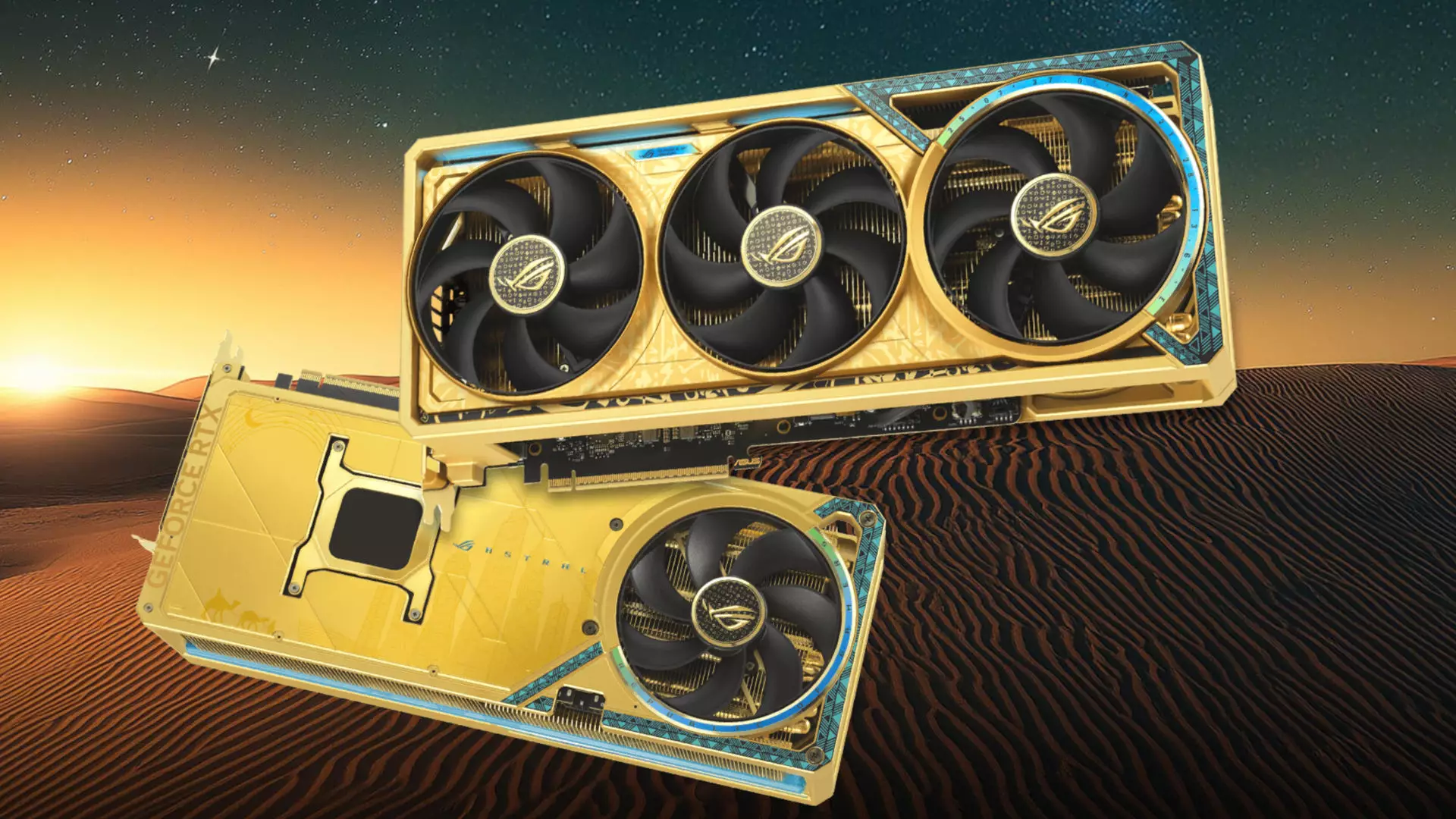In recent years, the price of graphics cards has surged to unprecedented heights, leaving gamers and enthusiasts alike reeling at the sheer cost of premium technology. With Nvidia’s GeForce RTX 5090 Founders Edition sporting a jaw-dropping MSRP of $1,999, it has become emblematic of the industry’s trend towards exorbitant pricing. However, Asus has raised the stakes even higher with their ROG Astral GeForce RTX 5090 Dhahab OC Edition, which boasts a staggering price tag of $7,000. These soaring costs not only reflect the growing demand for high-performance gaming hardware but also signify a cultural shift within the gaming community towards luxury items.
A Glimpse into the Dhahab Edition’s Features
At its core, the Asus ROG Astral GeForce RTX 5090 Dhahab OC Edition is an overclocked version of an already formidable card, with a default clock speed of 2,580 MHz that can reach up to 2,680 MHz when overclocked. While these numbers sound impressive, the professional gamer may find that the marginal performance gain does not quite justify the exorbitant price. Coupled with a four-fan cooler, which employs advanced thermal technology, including phase-change thermal pads, the card’s capabilities align with today’s high-performance gaming needs. However, the usage of real gold plating on both the cooler’s shroud and backplate raises the question of whether aesthetics and prestige have overshadowed genuine technological advancements in this design.
Gold-Plated Prestige: What’s in a Price Tag?
Indeed, a significant portion of the hefty price tag is attributable to the actual gold—6.5 grams of it, to be precise—adorning the cooler. While this might tickle the fancy of flaunters in the gaming community, the real question looms: Does the gold physically enhance performance? Absolutely not. This ludicrous embellishment serves to attract the wealthiest niche of gamers who view their GPUs not just as tools for competitive gaming but as status symbols. Therefore, it becomes evident that we are witnessing not only a technological advancement but also a cultural phenomenon where exclusivity reigns supreme.
The Exclusivity Factor: A Market for the Elite
The Dhahab Edition exists within a very exclusive tier, primarily available in select locations in the Middle East. The allure of limited availability adds an intriguing layer to its desirability. In a world where everything seems commoditized, owning a graphics card that is deliberately scarce transforms this hardware into an object of prestige rather than mere functionality. The idea that only a few can possess such an item instills a sense of envy among gamers who may desire the aesthetic rather than the practical use of the hardware.
Are We Chasing the Wrong Dream?
As a proactive gamer contemplating the intersection of performance and price, the question arises: Should you be investing such a considerable amount of your hard-earned money into this GPU? It’s worth considering that for the same budget, one could create an entire high-performance gaming rig paired with a magnificent OLED display. The choice to pour money into one glorified component raises eyebrows and offers food for thought. What does owning the Dhahab Edition truly bring to the gaming experience, beyond the shimmer of gold and the envy of peers?
A Shift in Gamer Priorities
It’s crucial for the gaming community to ponder what this trend reveals about our values. Has gaming become less about the experience itself and more about owning the “best” that money can buy? As a society, are we trading substance for surface, succumbing to the shiny allure of luxury rather than pursuing genuine gaming enjoyment? The affirmative feedback loop between exclusivity and price could mean that, while these high-end graphics cards continue to fly off the shelves, many gamers are merely chasing a dream of prestige, rather than immersing themselves in what made gaming great in the first place.
With the rise of companies like Asus leading the charge in the hyper-luxury tech market, the landscape of PC gaming is experiencing a tumultuous shift. The future may see more gamers turning towards budget-friendly, high-value alternatives that deliver stellar performance without the extravagant gilded hype. The question remains: how long before the allure of exorbitantly-priced luxury items loses its luster, urging both manufacturers and consumers to return to the roots of true gaming pleasure?


Leave a Reply